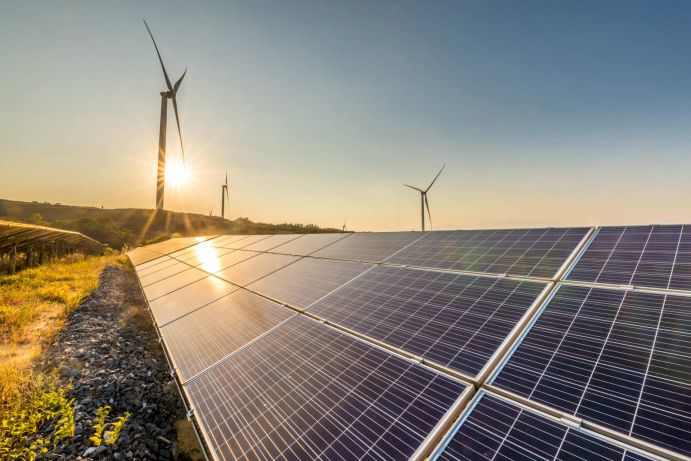Action 2: Establishing green hydrogen in Germany
We will make green hydrogen marketable and enable its production, transportability and usability on an industrial scale.
Where do we stand?
Green hydrogen is the energy source of the future and indispensable for the success of the energy system transformation. Green hydrogen can also be used to reduce the climate impact of those areas that are currently the most harmful to the climate: industry, transport, and heat supply. Since Germany – like many other countries – will not be able to meet its demand for green hydrogen on its own, it will need imports of green hydrogen from regions with ample wind and sunshine. Close international cooperation on green hydrogen will therefore be all the more important in the future.
What are the research needs?
Hydrogen production from renewable energies is technically advanced – green hydrogen is produced in a climate-neutral way by electrolysis from renewable electricity and water. One challenge for research is found in the currently high production and transport costs. In addition, there is a lack of plants and supply chains on a commercially relevant scale. Depending on the technology, further technical potential in the areas of service life and process energy efficiency must be leveraged in order to make green hydrogen competitive. The question of suitable transport solutions, especially over longer distances, must also be clarified. In addition to the usual, energy-intensive processes – liquefying or pressurising it for transport – carrier chemicals which bind the hydrogen during transport may also be suitable for this purpose. An alternative option is to produce synthetic hydrogen derivatives such as fuel or ammonia and transport them using conventional infrastructures.
Implementation steps and milestones
- Together with three other ministries, we launched the National Hydrogen Strategy in 2020 as a coherent framework for action of the Federal Government. This is intended to facilitate Germany’s entry into a hydrogen economy.
- Together with industry, science and civil society, we will draw up a roadmap for the hydrogen economy. The aim is to formulate the specific areas of research and the actions required.
- In 2020, we launched the ‘Hydrogen Republic of Germany’ ideas competition. Large-scale flagship projects are expected to lay the foundations for the broad use of green hydrogen in industry, transport and buildings. A crucial aspect will be to launch a competitive water electrolysis system on an industrial scale (larger than one gigawatt). At the same time, the ideas competition is also open to completely new technologies developed in application-oriented basic research.
- We will establish and deepen international research partnerships, for example on green hydrogen, through joint feasibility studies and funding announcements with other countries. For example, we plan to start a feasibility study with Australia in 2020.
- Together with foreign partners, we will investigate the prospects and diverse issues of a global green hydrogen economy. These include the production of green hydrogen and, subsequently, of its derived products such as methanol or ammonia in sunny and/or windy regions; its transportation at regional, national and global level; and its use, for instance in industry and transport.
- In 2020, we will present a first draft of the 'H2Atlas-Africa' on green hydrogen generation potentialsin Southern and West Africa. The aim is to providea science-based analysis of locations suitable forthe production, transport and processing of greenhydrogen in these focus regions. This includes aninteractive presentation on climatic, political, legal, social, economic and environmental conditions for investments in green hydrogen infrastructures.
- By 2025, we will have enabled large-scale productionof green hydrogen that is competitive with fossilalternatives, thus laying the foundations for a sustainable international hydrogen economy.
Last updated on











